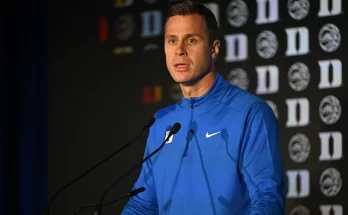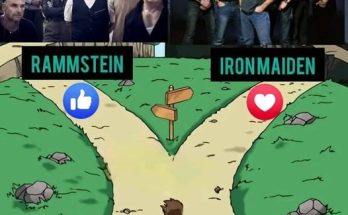Milwaukee Bucks general manager Jon Horst has made it his priority this offseason to secure a contract extension for shooting guard AJ Green, a once-overlooked player who has blossomed into a vital piece of the Bucks’ rotation. What makes Green’s story even more remarkable is that he went undrafted in 2022, coming into the league with minimal fanfare. But over the last couple of seasons, and especially during the 2024–25 campaign, he carved out a role not only as a shooter but as a reliable two-way contributor for a Bucks team still aiming for another championship run.
Green’s transformation from a fringe player to an impactful role player is the kind of developmental success that any front office hopes for. After signing a two-way deal with Milwaukee following the 2022 draft, Green spent time between the NBA and G League, gradually earning more minutes. He showed glimpses of promise, particularly as a floor spacer. However, it wasn’t until this past season that he truly stepped forward as a consistent and dependable part of the team’s second unit.
In the 2024–25 season, Green played in 73 games and averaged 22.7 minutes per game. His role grew significantly compared to prior years, and he responded by shooting an exceptional 42.7 percent from beyond the arc on high volume, while averaging 7.4 points per game. His ability to knock down threes reliably made him an essential piece on a team built around stars like Giannis Antetokounmpo and Damian Lillard, both of whom thrive with shooters surrounding them.
But it wasn’t just his shooting that made an impression. Green’s defense—long considered a weakness—improved markedly. He showed more awareness off the ball, better positioning, and was no longer a liability when facing top perimeter threats. Though he isn’t a lockdown defender by any stretch, his effort and intelligence on that end have made him a net positive. By the end of the season, his defensive rating placed him among the more effective defenders in the Bucks’ rotation. His playoff performance only cemented his value, as he played five games and shot over 50 percent from three on nearly seven attempts per game, averaging 11 points.
These are the kinds of numbers that attract attention around the league, especially for a player making under \$250,000 on the final year of a three-year deal. The Bucks are well aware of this, and that’s why Horst acted swiftly. Early in July, once Green became eligible for a contract extension, Horst reached out to initiate the conversation. While full negotiations haven’t yet begun, the message was clear: the Bucks want Green long-term, and they want to get a deal done well before he becomes a free agent in 2026.
For Horst, this is a strategic move. The Bucks are built to win now, but their core—Antetokounmpo, Lillard, and Khris Middleton—is aging. They’ve traded away many future assets to stay in contention and don’t have many young players stepping into significant roles. Green, at 25, is the rare exception. He’s one of the few players under 26 on the roster logging over 20 minutes per game. He represents both youth and proven reliability, a combination that’s hard to find and even harder to keep under contract at a team-friendly number.
From a cap management standpoint, locking Green into a multiyear extension makes sense. Similar players in the league—elite shooters who play passable defense—are earning anywhere from \$9 to \$12 million annually. Players like Max Strus, Duncan Robinson, and Grayson Allen fall into this category, and Green’s production in 2024–25 fits right in with that group. A contract extension in that range would reward his development while still maintaining flexibility for Milwaukee’s front office to maneuver around their star-heavy payroll.
There’s also the intangible aspect. Green’s development is a success story for the Bucks’ scouting and coaching staff. In a period where the team has leaned heavily on veterans and trades, having an undrafted player evolve into a core piece is a testament to the organization’s infrastructure. Green isn’t just a shooter who got hot for a few games—he’s become part of the Bucks’ identity off the bench. He plays within the system, defends his position, spaces the floor for the stars, and doesn’t demand the ball to be effective.
Horst, who himself signed a contract extension earlier this year, understands the value of continuity. Green’s presence provides a steadying force within a second unit that may soon see turnover. Other wing options on the team, such as Gary Trent Jr. and Kevin Porter Jr., face uncertain futures due to contract situations or injuries. Green, by contrast, has remained healthy, consistent, and committed to his role. His availability and reliability may be just as important as his shooting percentage.
The Bucks’ coaching staff has also taken note of Green’s composure in pressure situations. He was one of the few role players who didn’t shrink during the team’s intense playoff series against Indiana. Despite being relatively inexperienced in postseason play, he knocked down threes with confidence, competed defensively, and held his own against tougher assignments. These kinds of performances are what elevate role players from benchwarmers to playoff rotation staples.
For Green himself, the extension talks are an opportunity to solidify his NBA career. From undrafted to indispensable, his journey reflects both his work ethic and Milwaukee’s willingness to give him a real shot. At 25, he’s entering his prime, and a four-year deal would take him through his age-29 season. That’s a critical period for a shooter—many don’t begin to decline until their early 30s. For both Green and the Bucks, an agreement now would create long-term security and mutual benefit.
Of course, there’s always a question of upside. What does Green become beyond what he’s already shown? Could he evolve into a starter-level two-guard? Can he add more to his game off the dribble or as a secondary playmaker? Those questions may not be urgent to answer now. Even if he remains a high-level shooter and passable defender, he brings more than enough to merit a mid-tier extension.
The Bucks will need to be calculated, though. With a bloated payroll already tied to Antetokounmpo, Lillard, and Middleton, the luxury tax looms large. But value contracts—especially those for young, ascending players—are what make championship rosters sustainable. Overpaying veterans and underpaying contributors like Green can lead to imbalance. Getting this extension right is more than financial—it’s strategic.
For now, Green is saying all the right things. He’s expressed a desire to stay in Milwaukee, and Horst believes the two sides are aligned in both interest and timing. The goal is to get something done before the end of the 2025–26 season, though ideally much sooner. If both sides can agree on a reasonable number, the extension could be finalized before training camp even begins. That would give the Bucks some clarity heading into another title push and give Green peace of mind about his place in the league.
Milwaukee’s championship hopes rest on the health and performance of its superstars, but winning titles also requires high-functioning role players who know their jobs and execute consistently. AJ Green is one of those players. He may not make the highlight reels or dominate headlines, but he’s exactly the kind of player who tips a playoff game with a timely three or a smart rotation on defense.
Jon Horst knows this. That’s why he’s pushing to extend Green now—not just to reward the past, but to protect the Bucks’ future.



